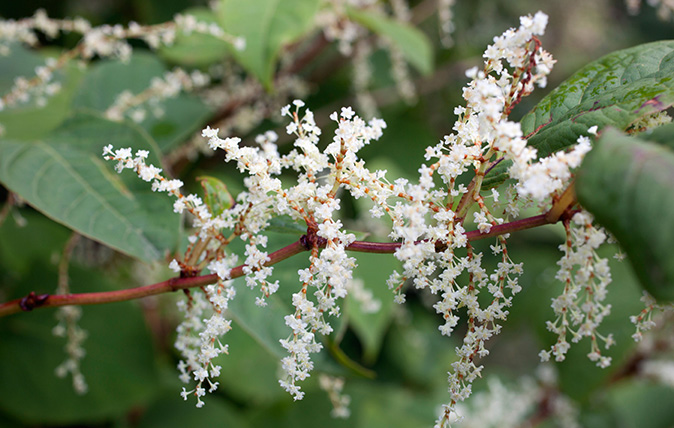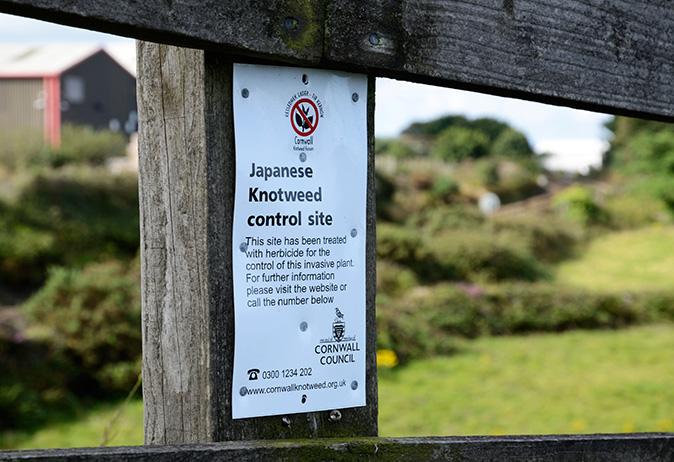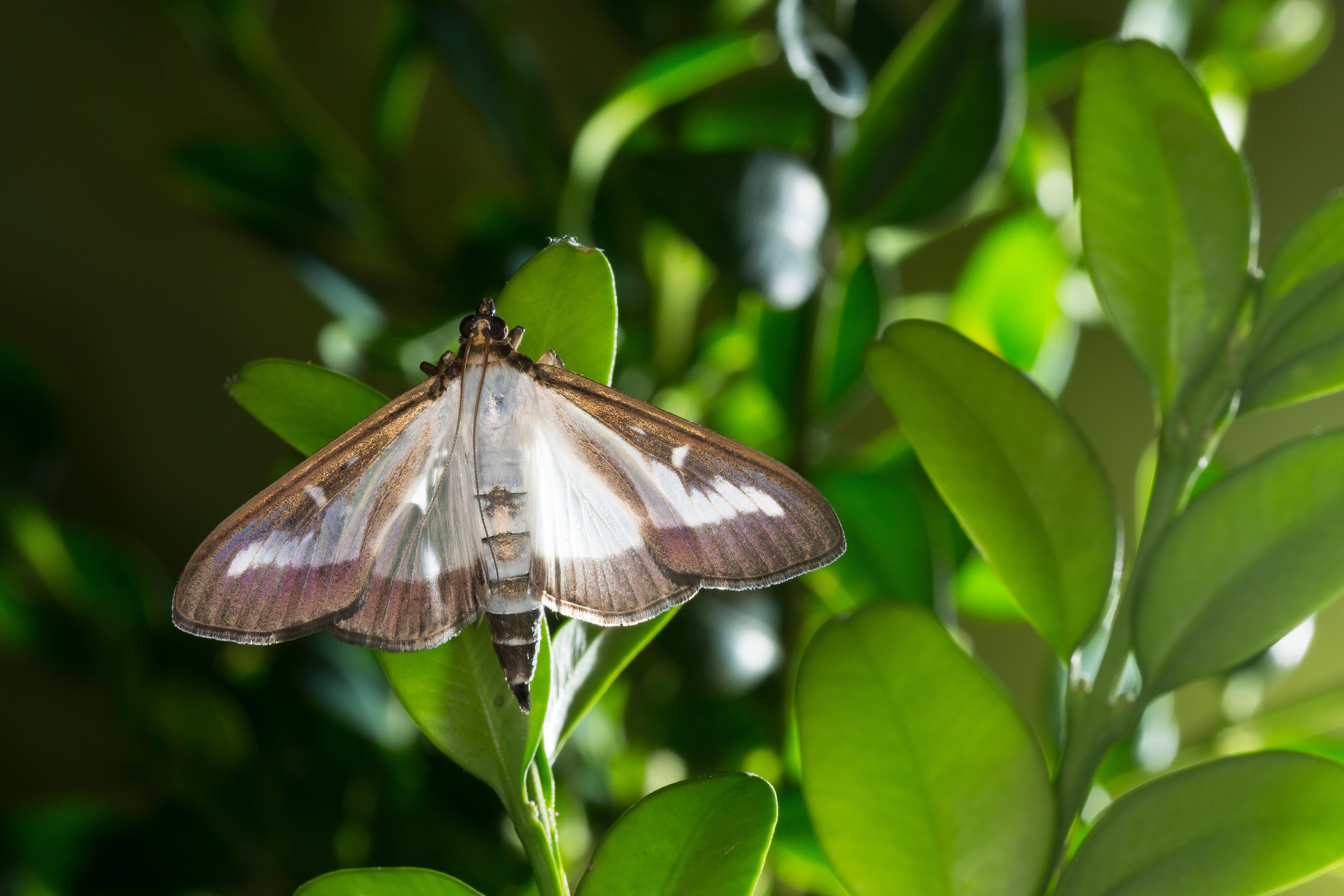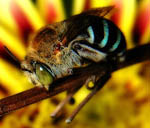Japanese knotweed: How a delicate bloom beloved of the Victorians became a modern British scourge
Japanese knotweed took Britain by storm in the 19th century as a beautiful and highly-prized plant that was hugely fashionable. More recently it's had a very different impact, as Mark Griffiths explains.

Published in 1884, John Wood’s Hardy Perennials and Old-Fashioned Garden Flowers contains a sentence that changed British life: ‘It is a capital plant for the small town garden.’ The plant in question was Japanese knotweed , aka Fallopia japonica.
Wood’s intentions were good. He was encouraging Mr Pooter to garden above his pay grade by experimenting with a plant that was then considered outlandishly splendid and smart. He wasn’t to know that ‘capital’ in this context would come to mean the £167 million or so now spent in the UK each year on dealing with the consequences of his recommendation.
Others in this period eulogised the knotweed, but they tended to advise planting it only on sites large enough to accommodate its marauding and monopolising. Sir Joseph Hooker, William Robinson and Gertrude Jekyll were among the greats who extolled it as an ornament of the newly fashionable wild and woodland gardens and as a centrepiece for stately lawns, all the while peppering their praises with warnings about its expansionism.
The mother plant of most of the thickets that now plague us arrived first in Leiden, introduced by Philipp Franz von Siebold. Judged at least as desirable as his other Japanese introductions (among them, many that are now treasured garden staples), it was awarded a gold medal by the Utrecht Society of Agriculture and Horticulture in 1847. The following year, it was offered in Siebold’s catalogue at 500 francs for 26 plants – a sum that would have bought 250 of his hydrangeas or 500 of his wisterias.
The Royal Botanic Gardens, Kew, received Japanese knotweed from Siebold in August 1850. The first British nursery to offer it appears to have been Jackson & Son of Kingston-upon-Thames, in 1854; numerous others followed.
Its rampageousness was seen as a mark of its character and its owner’s standing: can your gardeners handle it? Have you land enough? Think the plant equivalent of keeping free-range big cats.
As recently as 1951, The RHS Dictionary of Gardening lauded it as a ‘noble perennial best grown as an isolated specimen’, but we were fast learning that this monster couldn’t be isolated. Its rhizomes could run for yards, deep below ground, and its canes could penetrate concrete and asphalt. As the smallest fragments of either could spawn new plants, most attempts to remove and dump it merely assisted in its nationwide spread.
Sign up for the Country Life Newsletter
Exquisite houses, the beauty of Nature, and how to get the most from your life, straight to your inbox.
To address this problem, the Wildlife and Countryside Act 1981 made it an offence to cause Japanese knotweed to grow in the wild. Then, under the Environmental Protection Act 1990, it was classed as controlled waste. Despite this, the Victorians’ exclusive prodigy now flourishes in every six-mile radius in the UK.
Latterly, the law has focused on its domestic state. House-sellers must declare if it grows on their plot and home owners may be prosecuted if they don’t prevent its spread beyond their boundaries or sued if it threatens the value of neighbouring properties. Yesteryear’s gold medal is today’s ASBO.

The most efficient control is still glyphosate-based weedkiller. I’m hoping that this chemical’s recent appearances in the news won’t speed the introduction of two biological controls that are currently being evaluated: a leaf-spot fungus and a psyllid insect, both of which attack Fallopia in their native Japan.
Biological controls are best confined to glasshouses. It would be disastrous if these purportedly precise assassins turned on Japanese knotweed’s valued cousins such as our wild and cultivated Persicaria species.
My preferred alternative is to have it removed by a specialist firm. One such, Environet, uses technology to rid the soil of the smallest remnants of rhizome. It was invented by the company’s founder Nicolas Seal, whose new paperback, Japanese Knotweed: Unearthing the Truth, discusses not only this plant’s biology and eradication but also its economic potential as a source of food, drugs and fuel.
Certainly, it’s valued medicinally in Japan (where its name, itadori, means ‘remove pain’) and as a vegetable, but I treasure my first wild encounter with it there more as a lesson in Nature’s supremacy as a gardener, in how she keeps order as we cannot.
The knotweed formed a thicket three yards square. Elegant, groomed-looking, it had its place and seemed content to keep to it, in the patchwork of bamboo, Miscanthus, hostas and day-lilies that mantled the volcano’s lower slopes.
‘Is that it?’ I asked. ‘Yes,’ my guide replied, ‘that’s an old clump. That’s how it grows. Why? Were you expecting more?’
Mark Griffiths is the editor of The New RHS Dictionary of Gardening

How to get rid of box moth caterpillars
The box moth, Cydalima perspectalis, and box moth caterpillars can quickly destroy box hedges and other box plants. Here's how

Things to know about insects, pollinators and predators
How to encourage good insects, the top pollinators and worst predators – all you need to know about insects, good
-
 'To exist in this world relies on the hands of others': Roger Powell and modern British bookbinding
'To exist in this world relies on the hands of others': Roger Powell and modern British bookbindingAn exhibition on the legendary bookbinder Roger Powell reveals not only his great skill, but serves to reconnect us with the joy, power and importance of real craftsmanship.
By Hussein Kesvani
-
 Spam: The tinned meaty treat that brought a taste of the ‘hot-dog life of Hollywood’ to war-weary Britain
Spam: The tinned meaty treat that brought a taste of the ‘hot-dog life of Hollywood’ to war-weary BritainCourtesy of our ‘special relationship’ with the US, Spam was a culinary phenomenon, says Mary Greene. So much so that in 1944, London’s Simpson’s, renowned for its roast beef, was offering creamed Spam casserole instead.
By Country Life